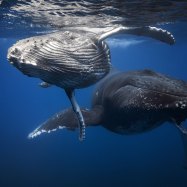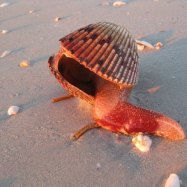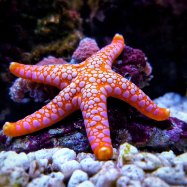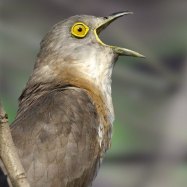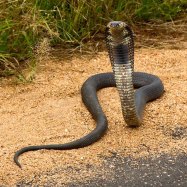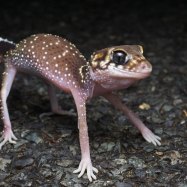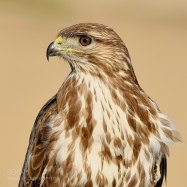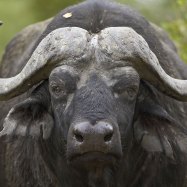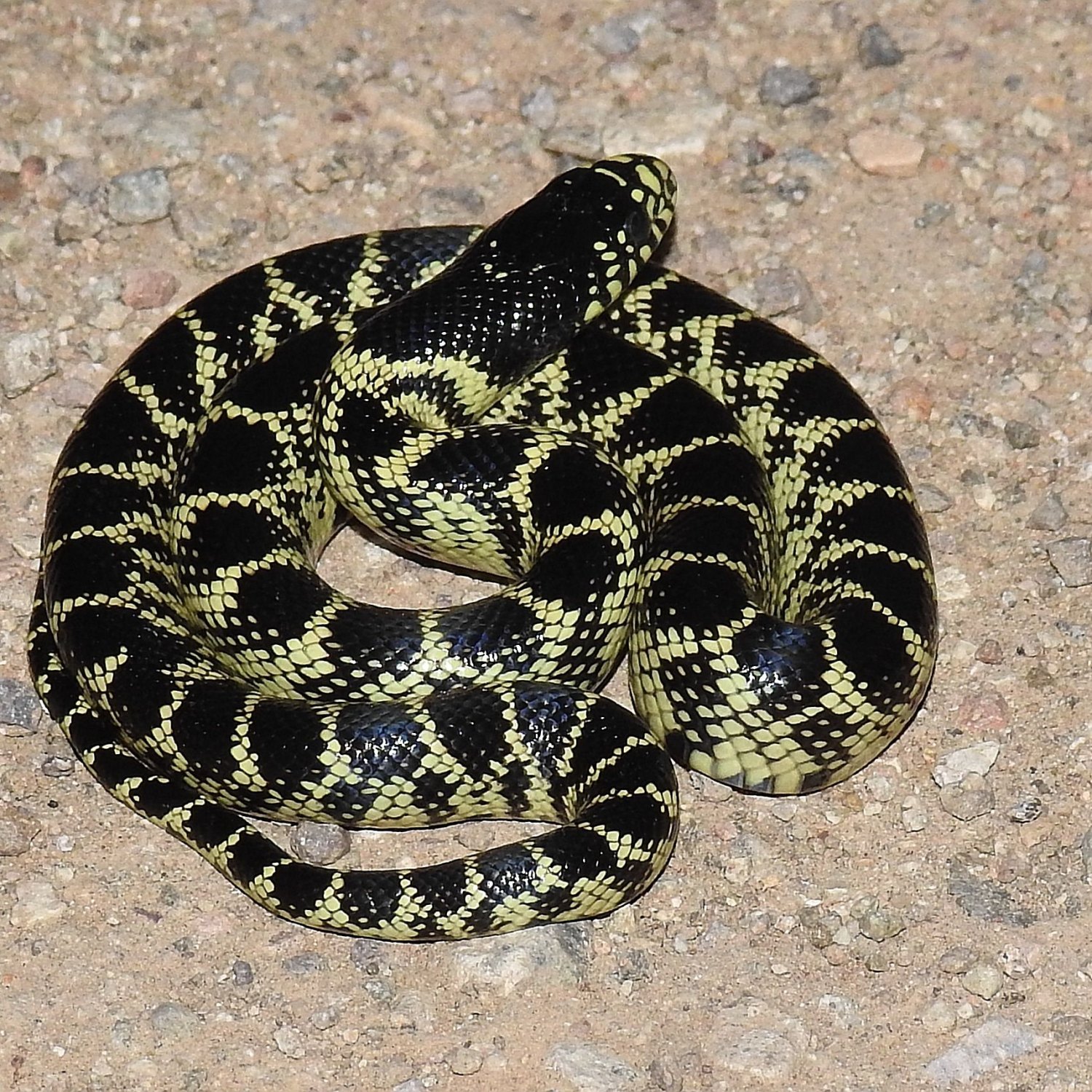
Sidewinder
15-30 inches
The sidewinder is a desert-dwelling snake with a length of 15-30 inches. Belonging to the Viperidae family, this slender and cylindrical reptile is commonly found in the desert regions. Its unique way of moving sideways makes it stand out among other snakes. Despite its intimidating appearance, the sidewinder is not aggressive towards humans. It mainly feeds on small rodents, making it a vital part of the desert ecosystem.
Animal Details Summary:
Common Name: Sidewinder
Kingdom: Animalia
Habitat: Deserts
The Fascinating Life of the Sidewinder Snake
When we think of deserts, we often imagine a barren landscape with scorching sun and scarce resources. But in reality, deserts are full of life and are home to many unique animals. One such animal is the sidewinder snake, scientifically known as Crotalus cerastes, a fascinating creature that has adapted to survive in the harsh desert environment. From its unique appearance to its remarkable hunting techniques, the sidewinder snake has caught the attention of scientists and nature enthusiasts alike Sidewinder. Let's delve deeper into the world of this amazing reptile.A Quick Introduction to the Sidewinder Snake
The sidewinder snake, also known as the horned rattlesnake, is a venomous pit viper species that belongs to the Viperidae family. It is found in the desert regions of the southwestern United States and northwestern Mexico, making it a native of these regions. The name "sidewinder" is derived from the way the snake moves, as it appears to move sideways in a wave-like motion. This motion allows it to navigate through the desert sands efficiently.Anatomy of the Sidewinder Snake
The sidewinder snake is a slender and cylindrical reptile, with a body shape designed for survival in its desert habitat. It can grow up to 15-30 inches in length, with some individuals reported to reach a maximum length of 3 feet. Its body is covered in pale tan or yellow scales, which blend in with the desert sand, making it difficult for predators to spot them. The snake also has darker brown markings on its body, which helps it to camouflage effectively in the desert environment Savannah Monitor.One of the most distinctive features of the sidewinder snake is its horn-like scales above its eyes and at the tip of its tail. These scales are believed to serve as a defense mechanism against predators, as they make the snake appear larger and more threatening. The snake also has heat-sensitive pits on its head, which enable it to detect prey in the dark and hot desert nights.
The Hunting Techniques of the Sidewinder Snake
As a member of the viper family, the sidewinder snake is a carnivore, and its primary source of food is rodents, lizards, and small birds. It is an ambush predator, which means it lies in wait for its prey to come near before striking. The sidewinder snake has a unique hunting technique that allows it to catch prey in the loose desert sand. It moves sideways in a wave-like motion, which gives it the ability to move quickly and efficiently through the sand without sinking in.But the most remarkable thing about the sidewinder snake's hunting technique is its ability to bury itself under the sand and strike its prey from below. It does this by creating a circular motion with its head, which pushes the sand aside and creates a hole for it to hide in. When a prey comes near, the snake quickly strikes and captures it using its venomous fangs.
The Habitat and Behavior of the Sidewinder Snake
The sidewinder snake is found in the desert regions of the southwestern United States and northwestern Mexico, where it has adapted to its harsh environment. It is most commonly found in sandy and gravelly regions, where it can easily maneuver through the loose sand. The snake's behavior is also influenced by its surroundings, as it is a solitary and nocturnal animal, preferring to hunt at night when the temperatures are cooler.During the day, the sidewinder snake seeks shelter under rocks, logs, or in abandoned burrows to escape the scorching sun. It also has the ability to raise its body temperature in extreme heat by extending itself fully and exposing the heat-sensitive organs on its head. This is a unique adaptation that helps it to survive in its desert habitat.
The Sting of the Sidewinder's Bite
The sidewinder snake's venom is a potent neurotoxin that is designed to immobilize and kill its prey. However, its venom is not as toxic as some other venomous snakes, and its bites rarely have serious consequences for humans. But it is always advisable to avoid any contact with the sidewinder snake, as its bite can still cause severe pain, swelling, and discomfort.Conservation Status of the Sidewinder Snake
The sidewinder snake is not currently listed as an endangered species, but its population is declining. The major threats to this species are habitat destruction and human encroachment. As humans continue to expand into their desert habitat, the sidewinder snake's natural habitat is being destroyed, and its population is declining. It is essential to protect these creatures and their environment to ensure their survival.In Conclusion
The sidewinder snake may not be the biggest or the most well-known snake, but its unique appearance and remarkable survival tactics make it a fascinating animal. From its sideways movement to its hunting techniques, there is still much to be discovered about this desert-dwelling reptile. As we continue to learn more about the sidewinder snake, let us also strive to protect their natural habitat, so that these incredible creatures can continue to thrive in their sandy home.

Sidewinder
Animal Details Sidewinder - Scientific Name: Crotalus cerastes
- Category: Animals S
- Scientific Name: Crotalus cerastes
- Common Name: Sidewinder
- Kingdom: Animalia
- Phylum: Chordata
- Class: Reptilia
- Order: Squamata
- Family: Viperidae
- Habitat: Deserts
- Feeding Method: Carnivorous
- Geographical Distribution: Southwestern United States and Northwestern Mexico
- Country of Origin: United States and Mexico
- Location: Desert regions
- Animal Coloration: Pale tan or yellow with darker brown markings
- Body Shape: Slender and cylindrical
- Length: 15-30 inches
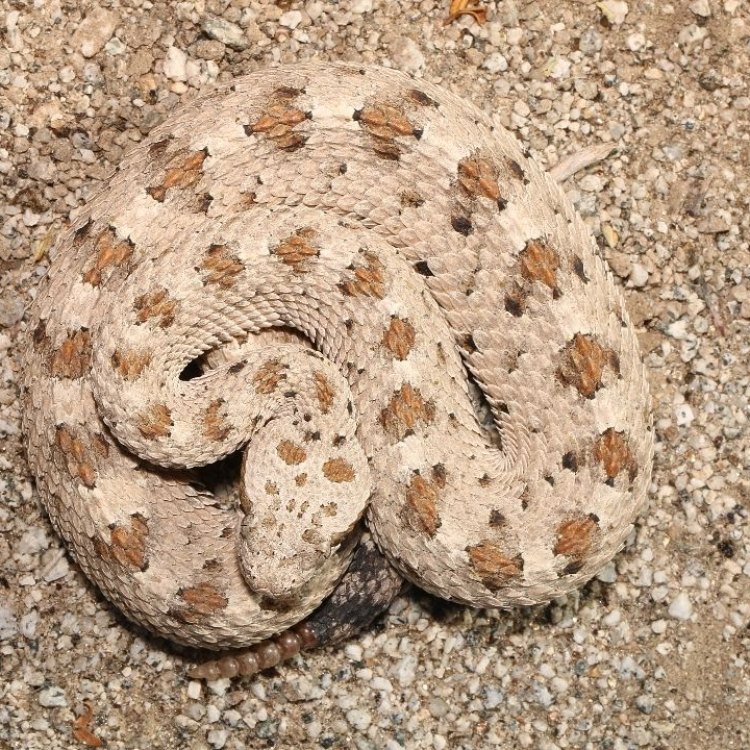
Sidewinder
- Adult Size: 2-3 feet
- Average Lifespan: 12-15 years
- Reproduction: Sexual
- Reproductive Behavior: Mating season occurs from April to June
- Sound or Call: Soft hissing sounds
- Migration Pattern: No regular migration patterns
- Social Groups: Solitary
- Behavior: Sidewinders are burrowing snakes and are well adapted to life in desert environments. They move from side to side, creating distinct tracks in the sand. Sidewinders are ambush predators and mostly feed on small mammals, lizards, and birds. They have excellent camouflage and are able to bury themselves in the sand to hide from predators. Sidewinders are venomous snakes and use their venom to immobilize their prey.
- Threats: Habitat loss, human persecution, and climate change
- Conservation Status: Least Concern
- Impact on Ecosystem: Sidewinders play a role in controlling populations of small mammals in their desert ecosystems.
- Human Use: Some local Native American tribes use sidewinders for their venom in various traditional practices.
- Distinctive Features: The most distinctive feature of sidewinders is their mode of locomotion, in which they move sideways with a distinctive sideways-slithering motion.
- Interesting Facts: 1. Sidewinders are well adapted to surviving in the harsh desert environment, including their ability to travel across hot sand without overheating. 2. They are commonly found in sandy deserts, where their unique movement helps them navigate the loose sand. 3. Sidewinders have specialized scales on their belly that help them grip the sand while moving. 4. They have a heat-sensitive pit organ located on each side of their head, which allows them to detect warm-blooded prey and navigate in the dark. 5. Sidewinders are not aggressive snakes and will typically try to avoid confrontation with humans.
- Predator: Birds of prey, larger snakes
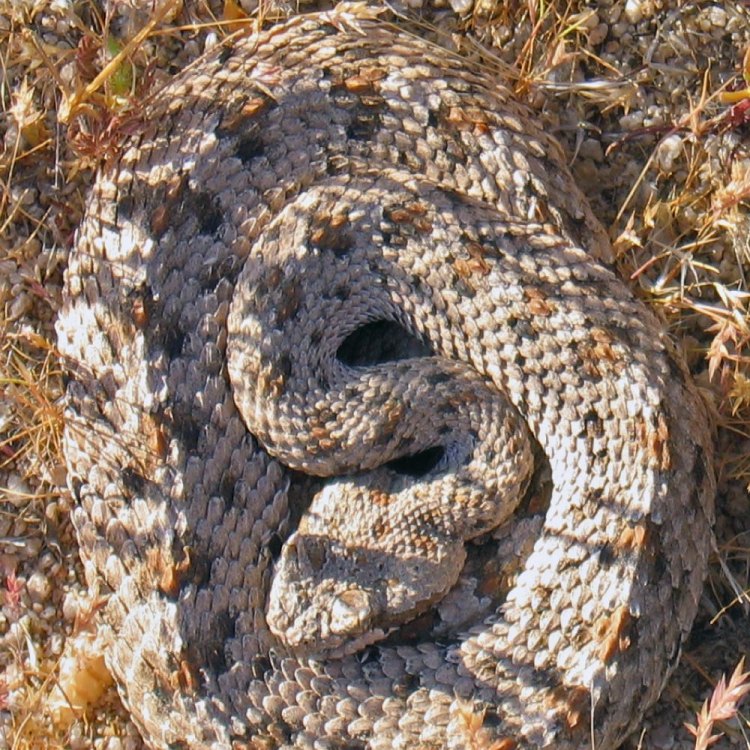
Crotalus cerastes
Sidewinder: The Fascinating Burrowing Snake of the Desert
In the vast, barren landscapes of the desert, there lies a unique and fascinating creature known as the Sidewinder. This snake, with its distinctive sideways-slithering movement, captures the attention of all who encounter it. But there's much more to this intriguing serpent than meets the eye.So, let's dive into the world of the Sidewinder and uncover the various aspects of its life, behavior, and impact on its ecosystem PeaceOfAnimals.Com.
Size and Lifespan
The Sidewinder, also known as the horned rattlesnake or the sidewinding adder, is a medium-sized snake that can grow to be 2-3 feet long. They are easily recognizable by the small horns above their eyes, giving them a unique appearance.These remarkable snakes have an average lifespan of 12-15 years in the wild, making them relatively long-lived compared to other snake species.
Reproduction
Sidewinders are a sexually reproducing species, and their mating season occurs from April to June. During this time, males will compete for the attention of females by engaging in combat dances and displaying their horns.Once mating occurs, the female will lay a clutch of around 6-10 eggs, which she will incubate for approximately two months before they hatch. The hatchlings are born fully formed and independent, ready to survive in the harsh desert environment.
Behavior and Adaptations
One of the most remarkable features of the Sidewinder is its mode of locomotion. This snake moves with a sideways-slithering motion, creating distinct tracks in the sand Siberian Husky. This unique adaptation allows them to travel across the loose, hot sand of the desert without overheating or sinking in.In addition to their distinctive movement, Sidewinders also have specialized scales on their belly that help them grip the sand while moving. This adaptation is essential for their survival in the desert environment, as it allows them to avoid being swept away by shifting sand.
Furthermore, these snakes have a heat-sensitive pit organ located on each side of their head, which allows them to detect warm-blooded prey, navigate in the dark, and avoid predators.
Sidewinders are solitary creatures, preferring to live and hunt alone. They are nocturnal and will typically burrow themselves in the sand during the day to avoid the scorching heat.
Diet and Predators
Sidewinders are ambush predators and mainly feed on small mammals, lizards, and birds. They use their exceptional camouflage to hide in the sand and wait for their unsuspecting prey to pass by. Once they strike, they use their venom to immobilize their victim.These snakes have a vital role in controlling the populations of small mammals in their desert ecosystem. By preying on these small animals, Sidewinders contribute to the balance of their fragile desert environment.
However, like many other animals, Sidewinders also face their own predators. Birds of prey, such as hawks, and larger snakes, including kingsnakes and gopher snakes, are known to prey on Sidewinders.
Threats and Conservation Status
Habitat loss, human persecution, and climate change are the biggest threats to the Sidewinder's survival. As human development continues to encroach on their natural habitats, these snakes are losing their homes and sources of food.Additionally, many humans view snakes as a threat and often kill them out of fear. Climate change is also a major concern, as it can alter the delicate balance of the desert ecosystem, affecting the Sidewinder's survival.
As of now, the conservation status of the Sidewinder is labeled as Least Concern by the International Union for Conservation of Nature (IUCN). However, conservation efforts must continue to protect these unique snakes and their fragile desert environment.
Human Use
Some local Native American tribes view Sidewinders as a valuable resource and use their venom in various traditional practices, such as medicine and rituals.It's worth noting that Sidewinders should never be handled by humans as they are venomous and can be dangerous if provoked. These snakes are known to avoid confrontation and will typically retreat or move away when encountered by humans.
In Conclusion
In conclusion, the Sidewinder is a fascinating and well-adapted snake that has found a unique way to survive in the harsh desert environment. With their sideways-slithering motion, specialized scales, and heat-detecting abilities, these snakes have captured the attention of researchers and nature enthusiasts alike.While they face various threats, efforts are being made to protect and conserve these remarkable creatures and their vital role in their desert ecosystem. As we continue to learn more about the Sidewinder, we can appreciate and admire their resilience and adaptability in the face of challenging conditions.
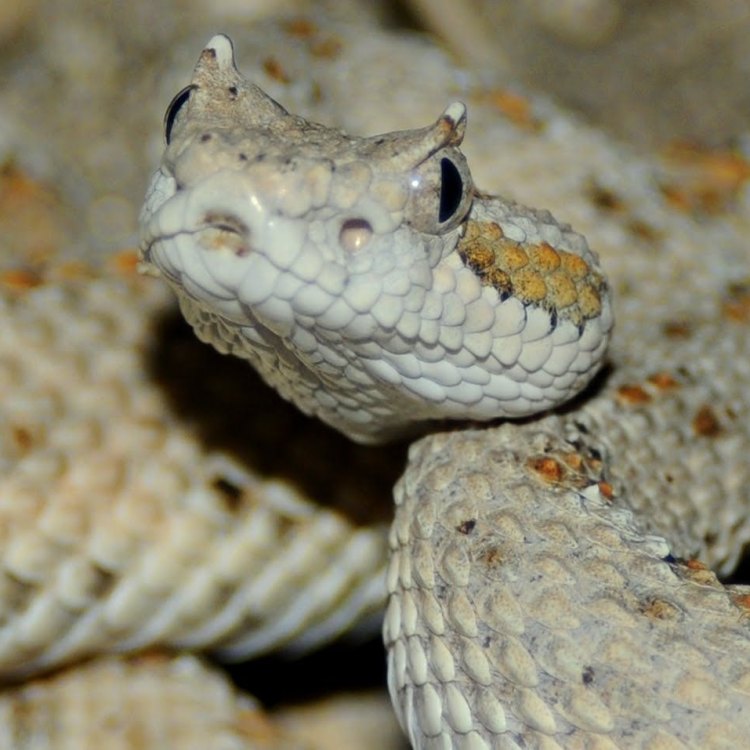
The Fascinating Life of the Sidewinder Snake
Disclaimer: The content provided is for informational purposes only. We cannot guarantee the accuracy of the information on this page 100%. All information provided here may change without prior notice.

